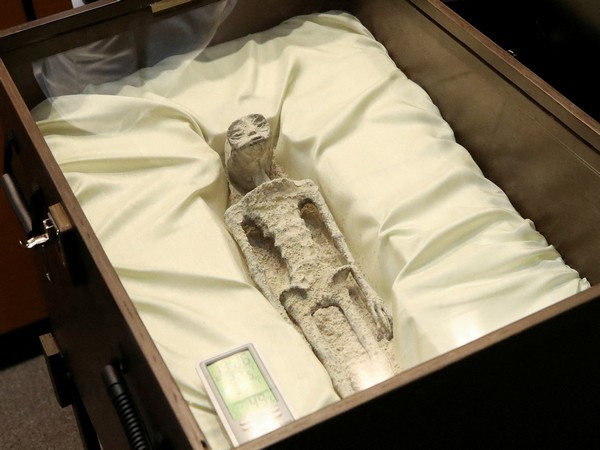
Washington, DC: A NASA panel, formed to study ‘unidentified anomalous phenomena’ more widely known as UFOs, said on Thursday that it has found no evidence that any of the reported objects were extra-terrestrial in origin, The Washington Post reported.
Notably, these remarks come days after 1000-year-old fossils of alien corpses were displayed in the Mexico Congress.
“It is increasingly clear that the majority of UAP observations can be attributed to known phenomena or occurrences,” NASA’s 16-member expert panel wrote in its report.
However, the panel also concluded that the ability to study UAPs is hampered by “poor data collection and a lack of uniform standards”, which must be remedied if research is to proceed on a credible basis.
“The top takeaway of the study is that there’s a lot more to learn,” NASA Administrator Bill Nelson said in public remarks at the agency’s headquarters in Washington.
While there was no evidence that the objects were not of this Earth, Nelson said that he is keeping an open mind and following science toward a potential conclusion and that he personally believes that intelligent life exists elsewhere in the vastness of the universe, The Washington Post reported.
While the panel’s report was short on findings, it represents NASA’s first steps into serious UAP research.
David Spergel, the chair of NASA’s UAP independent study team, said that the experts did not come up entirely empty-handed, and most events they studied could be identified as “planes, balloons, drones, weather phenomena and instrument features,” The Washington Post reported.
However, NASA’s efforts to bring scientific rigour to a historically undisciplined field are unlikely to quell speculation that the US government is hiding information about the existence of extraterrestrial life, The Washington Post reported.
Notably, a former US intelligence analyst, David Grusch recently alleged in congressional testimony that for decades the government has run a classified program that retrieves alien spacecraft and even bodies.
In another major development, in Mexico City this week, a self-described “ufologist” displayed for lawmakers what he claimed were two alien corpses discovered in Peru in 2017, alleged to be about 1,000 years old.
Referring to the alleged display of ‘alien copses’ in Mexico’s Congress, Spergel said that anyone who claims to have discovered evidence of extraterrestrial life “ought to provide samples to the scientific community for analysis”.
“There’s a lot of folklore out there,” Nelson said. “That’s why we entered the stage…We, NASA, are trying to shift it from sensationalizing to science,” The Post quoted him as saying.
Meanwhile, the US Defense Department is also spearheading a government-wide effort to analyse UAP sightings. After an examination of more than 800 sightings based on information collected over nearly three decades, the department has reported that only 2 to 5 per cent could be described as “anomalous,” or unexplained. Its work is separate from NASA’s and includes additional classified information.
NASA announced on Thursday afternoon that Mark McInerney had been put in charge of UAP research for the agency. He had been NASA’s liaison to the Defense Department covering UAP activities.
The NASA panel has recommended the body to “play a prominent role” in the broader government effort to understand UAPs, using “existing and planned Earth-observing assets to probe the local environmental conditions associated with UAP that are initially detected by other means.”
The panel also recommended that NASA explore enhanced collaboration with commercial satellite and imagery companies.
Also, in a move likely to fuel the already intense public interest in the search for extraterrestrial life, the panel encouraged NASA to look into a “crowdsourcing system, such as open-source smartphone-based apps” to gather data from “citizen observers,” The Washington Post reported.
The panel also called for new techniques, including artificial intelligence and machine learning, to be brought to bear on the subject.
“We don’t know what these UAP are,” said Nelson, the NASA chief, “but we’re going to try to find out,” the Post quoted him as saying.